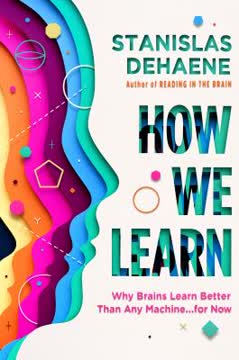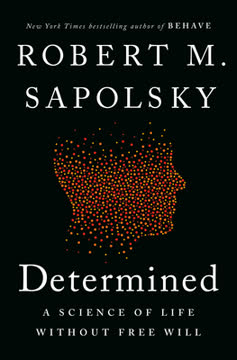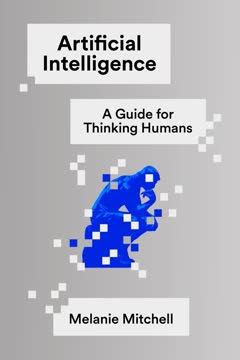重点摘要
1. 复杂系统从简单规则中展现涌现行为
单独的军蚁是行为上最不复杂的动物之一。
从简单中涌现。 复杂系统,从蚁群到人类大脑,展示了由简单组件遵循基本规则的相互作用所产生的复杂集体行为。这种涌现的复杂性无法通过孤立地研究单个组件来预测或理解。
涌现的例子:
- 蚁群展示集体智慧
- 大脑神经元产生意识
- 经济市场自组织
- 免疫系统适应新威胁
复杂系统的研究旨在理解这些涌现现象的产生方式,并识别跨领域的共同原则。这种跨学科的方法挑战了传统的还原论方法,并为解决生物学、物理学、社会科学和技术中的复杂问题提供了新途径。
2. 信息论连接热力学与计算
西拉德首次将熵与信息联系起来,这一联系后来成为信息论的基础,也是复杂系统中的关键思想。
信息作为物理概念。 克劳德·香农的信息论提供了一个量化和分析信息的数学框架,揭示了热力学、计算和生物学等看似不相关领域之间的深层联系。
信息论中的关键概念:
- 熵作为信息内容的度量
- 通道容量和通信中的噪声
- 压缩和纠错
这些思想对我们理解物理系统、计算甚至生命本身有深远影响。例如,将DNA视为携带信息的分子,彻底改变了我们对遗传学和进化的研究方法。信息论还支撑了现代技术,如数据压缩、纠错码和密码学。
3. 混沌理论揭示确定性的不可预测性
看似随机的行为可以从确定性系统中产生,而无需外部随机源。
混沌中的秩序。 混沌理论表明,简单的确定性系统可以产生复杂的、看似随机的行为,并对初始条件高度敏感。这一发现挑战了经典的可预测性概念,并在科学和哲学中具有深远影响。
混沌系统的关键特征:
- 对初始条件的敏感性(“蝴蝶效应”)
- 奇异吸引子和分形结构
- 周期倍增级联等普遍特性
混沌理论在多个领域有应用,包括:
- 天气预报和气候建模
- 生态学中的种群动态
- 金融市场分析
- 神经科学和心律分析
理解混沌帮助我们认识到在复杂系统中预测和控制的局限性,同时也揭示了潜在的模式和普遍性。
4. 元胞自动机用简单组件模拟复杂系统
规则110是一个非常简单的确定性系统的例子,它可以产生不可预测的复杂行为。
简单孕育复杂。 元胞自动机(CA)是由网格单元组成的数学模型,这些单元根据简单规则演化。尽管其简单,CA可以产生极其复杂的模式和行为,使其成为研究自然系统中涌现和计算的强大工具。
元胞自动机的著名例子和应用:
- 康威的生命游戏,展示丰富的涌现行为
- 沃尔夫拉姆的基本CA规则,按复杂性分类
- 模拟晶体生长和流体动力学等物理现象
- 模拟生物过程,如生物体中的模式形成
CA挑战了我们对简单性和复杂性关系的直觉,表明许多自然现象可能源于简单的基本规则。它们还在离散和连续自然模型之间提供了桥梁,提供了对计算和现实基本性质的新视角。
5. 遗传算法模拟进化以解决问题
这就是遗传算法的起源。我开始想,是否可以像人们培育好马和好玉米那样培育程序。
进化作为计算。 遗传算法(GA)是受生物进化原理启发的优化技术。它们展示了如何利用进化过程来解决复杂问题并生成创造性解决方案。
遗传算法的关键组成部分:
- 候选解决方案的种群
- 评估解决方案的适应度函数
- 选择、交叉和变异操作
GA已成功应用于各种问题:
- 工程设计优化
- 金融建模和交易策略
- 药物发现和分子设计
- 艺术和音乐创作
除了实际应用,GA还提供了对自然界中进化过程的力量和局限性的见解。它们展示了复杂适应如何通过小的随机变化积累并在选择压力下产生。
6. 网络科学揭示多样系统中的普遍模式
网络思维正准备入侵所有人类活动领域和大多数人类探究领域。
连接揭示结构。 网络科学通过关注组件之间的关系来研究复杂系统的结构和动态。这种方法揭示了从社交网络到细胞代谢等多样系统中的惊人相似性。
网络科学中的关键概念:
- 小世界特性和六度分隔
- 无标度网络和幂律度分布
- 网络的弹性和脆弱性
- 社区结构和模块化
网络思维的应用:
- 理解疾病和信息的传播
- 分析金融市场和经济系统
- 研究生态系统稳定性和物种相互作用
- 优化基础设施和交通网络
网络科学提供了理解复杂系统的强大框架,提供了跨学科的预测、控制和设计的新工具。
7. 复杂性科学的未来在于跨学科合作
复杂性科学正朝两个不同方向发展。
统一复杂性。 复杂系统的研究本质上是跨学科的,汲取了不同领域的见解和方法。随着该领域的发展,它面临着在保持广泛适用性的同时,发展统一理论框架的挑战。
未来发展的关键领域:
- 精炼和形式化涌现和自组织等概念
- 开发新的数学和计算工具来分析复杂系统
- 弥合不同描述尺度之间的差距(例如,从基因到生物体再到生态系统)
- 将复杂性原理应用于气候变化和社会不平等等紧迫的现实问题
复杂性科学的未来可能包括:
- 理论家和实验家之间的更多合作
- 整合物理学、生物学、计算机科学和社会科学的思想
- 开发新的教育项目和研究机构,专注于复杂性
- 在人工智能、合成生物学和可持续设计等领域的创新应用
随着我们的世界变得越来越互联和复杂,复杂性科学的见解和方法将变得越来越重要,以理解和应对我们面临的挑战。
最后更新日期:
FAQ
What's Complexity: A Guided Tour about?
- Exploration of Complexity Science: The book provides an overview of complexity science, focusing on how complex behaviors emerge from simple rules and interactions.
- Historical Context: It traces the development of complexity science from reductionism to new fields like chaos theory and network theory.
- Interdisciplinary Approach: Melanie Mitchell integrates concepts from biology, computer science, physics, and economics to explain complex systems.
Why should I read Complexity: A Guided Tour?
- Accessible to All: The book is written for both scientists and nonscientists, requiring no advanced background in math or science.
- Engaging Writing Style: Mitchell's engaging and informative writing makes complex ideas relatable and easier to grasp.
- Insight into Current Research: Readers gain insights into cutting-edge research and challenges in understanding complex systems.
What are the key takeaways of Complexity: A Guided Tour?
- Definition of Complexity: Complexity involves systems with large networks of components that exhibit complex behavior without central control.
- Emergence and Self-Organization: The book highlights how complex patterns arise from simple interactions without a central leader.
- Interconnectedness of Systems: Different complex systems, like ant colonies and economies, share common properties and behaviors.
How does Melanie Mitchell define complexity in Complexity: A Guided Tour?
- Complex System Definition: A complex system is one where large networks of components with no central control give rise to complex behavior.
- Key Characteristics: These systems exhibit complex collective behavior, signaling, information processing, and adaptation.
- Examples of Complex Systems: Examples include ant colonies, immune systems, and economies, all showing complex behaviors from simple rules.
What is reductionism, and how does it relate to complexity in Complexity: A Guided Tour?
- Basic Definition: Reductionism is the belief that understanding a whole system can be achieved by understanding its parts.
- Limitations of Reductionism: The book argues that reductionism often fails to account for interactions between parts in complex phenomena.
- Shift to Complexity Science: Mitchell discusses the shift from reductionist approaches to complexity science, focusing on emergent behaviors.
What is the significance of self-organization in complex systems according to Complexity: A Guided Tour?
- Definition of Self-Organization: Self-organization is the process where simple parts form complex structures without central control.
- Examples in Nature: Examples include animal behavior patterns, cell organization, and social network dynamics.
- Implications for Understanding Complexity: Understanding self-organization helps researchers grasp how order emerges from chaos.
How does Complexity: A Guided Tour address the concept of evolution?
- Darwinian Evolution: The book discusses how complex organisms evolve from simpler ancestors through natural selection.
- Genetic Algorithms: It explores evolutionary principles in computer science, using genetic algorithms to solve complex problems.
- Interplay of Randomness and Selection: The role of randomness in genetic variation and natural selection is highlighted.
What are genetic algorithms, and how are they used in Complexity: A Guided Tour?
- Definition of Genetic Algorithms: These are computational methods using natural selection principles to evolve solutions to problems.
- Application in Robotics: The book describes using genetic algorithms to evolve strategies for a robot named Robby.
- Real-World Applications: Genetic algorithms are used in fields like engineering, finance, and art to solve complex problems.
What is the Copycat program mentioned in Complexity: A Guided Tour?
- Analogy-Making Program: Copycat mimics human-like analogy-making in a letter-string microworld.
- Components of Copycat: It includes the Slipnet, Workspace, and codelets, which work together to solve analogy problems.
- Significance of Copycat: It models human cognition and creativity, showing how complex systems emerge from simple rules.
What is Kleiber's law, and why is it important in Complexity: A Guided Tour?
- Scaling of Metabolic Rate: Kleiber's law states that an organism's metabolic rate scales with its body mass to the three-fourths power.
- Implications for Biology: It challenges traditional views on metabolic rate scaling and suggests larger animals are more efficient.
- Connection to Metabolic Scaling Theory: The law is a key component of metabolic scaling theory, integrating genetics, ecology, and network science.
What are small-world networks, and how are they relevant in Complexity: A Guided Tour?
- Definition of Small-World Networks: These networks have short average path lengths and high clustering, common in social and biological systems.
- Examples in Real Life: Examples include social networks and the Internet, illustrating efficient communication and information flow.
- Significance for Complex Systems: Understanding these networks helps analyze complex system dynamics and information spread.
What are the best quotes from Complexity: A Guided Tour and what do they mean?
- “The whole is more than the sum of its parts.”: Emphasizes that complex systems can't be fully understood by analyzing individual components alone.
- “The great unexplored frontier is complexity.”: Highlights the importance of studying complex systems as largely uncharted scientific territory.
- “Nature proceeds little by little from things lifeless to animal life.”: Reflects the gradual evolution of complexity in nature through evolutionary processes.
评论
《复杂性:导览》因其对复杂系统的易懂介绍和跨学科方法而获得了大多数正面评价。读者们赞赏米切尔对复杂概念的清晰解释,以及书中对信息理论、进化和网络科学等主题的广泛覆盖。一些人批评书中各主题之间缺乏深度或连贯性。该书因其引人入胜的写作风格和将看似无关领域联系起来的能力而受到赞扬。然而,少数读者认为其内容过时或过于简化。总体而言,这本书推荐给对复杂性科学感兴趣的人,尤其是具有计算机科学背景的读者。
Similar Books















